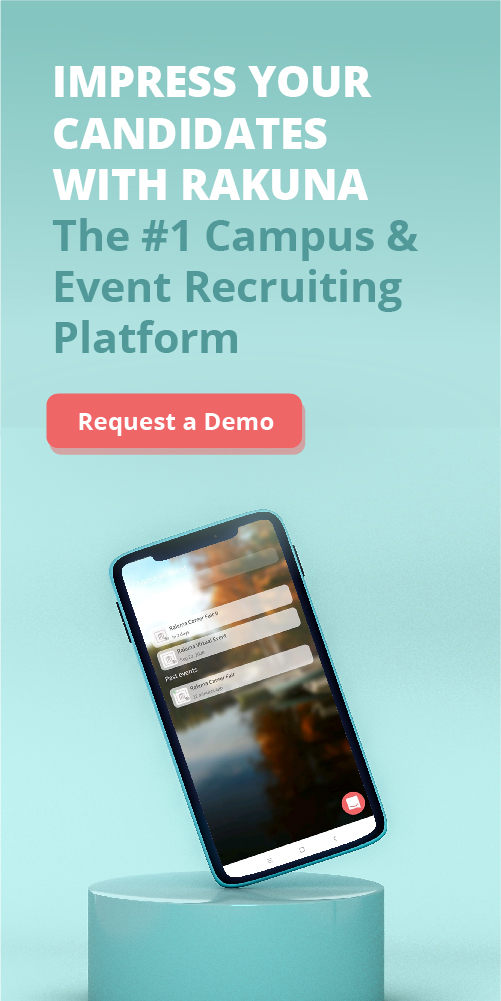Every spring, online forums buzz with anxious high school seniors debating college choices. A common worry? “Will attending a lesser-known school like the University of Forgottenia hurt my career prospects?”
According to Study International: Students often choose small classes, and even small schools, for their affordability, intimate class sizes, and close-knit communities, but career outcomes depend on countless factors we won’t dive into here.
As a recruiter, though, have you considered these schools from your perspective?
While they offer smaller talent pools and may be in remote areas,unique challenges compared to big-name universities. Yet, overlooking them means missing out on hidden gems. By investing time and resources in small schools, you can build a robust, long-term talent pipeline that sets your organization apart.
1. Lower Costs and Less Competition

Recruiting at large, prestigious universities is a crowded game, and everyone’s there, aiming for the same candidates. You might land solid hires, but expect fierce competition and high costs to woo them away from rivals.
In fact, a study by the National Association of Colleges and Employers (NACE) highlights that employers targeting top-tier schools often face inflated recruiting budgets due to saturated markets.
💡 That’s where small schools shine as an untapped opportunity. With less competition, you can connect with high-caliber candidates at a fraction of the cost, such as lower travel expenses, simpler event setups, and quicker decision-making from eager applicants.
For instance, financial advisory firms like those profiled in Barron’s have successfully differentiated their teams by recruiting from excellent but lesser-known colleges, reducing acquisition costs while accessing motivated talent.
To maximize this edge, leverage a recruiting analytics dashboard to assess your needs and efficiently pinpoint ideal candidates. This approach not only boosts your competitive advantage but also delivers a stronger ROI on your talent acquisition efforts.
2. Recruiting at Small Schools? Better People For Your Specific Needs

No two universities are alike, and even programs in the same field can produce graduates with vastly different skills and mindsets.
💡 When planning your campus recruiting strategy, be it at a small institution, or at a well-known establishment, focus on schools whose students align with your organization’s unique requirements.
Sticking to national rankings or big-name programs won’t always yield the specialized competencies you need; instead, thoughtful research into smaller institutions can give you an edge over short-sighted competitors.
Consider this: Graduates from small colleges often boast higher graduate school acceptance rates and stronger letters of recommendation due to personalized faculty interactions, according to insights from higher education experts.
Companies like GTM have tapped into this by recruiting from universities and colleges to foster innovation and cultural fit, resulting in hires who bring fresh perspectives tailored to specific roles.
By expanding your search, you’ll discover candidates with niche expertise or hands-on experience that perfectly match your needs, whether it’s in tech, finance, or beyond.
3. Greater Diversity

When teams reflect a mix of perspectives and experiences, the results speak for themselves: better ideas, faster solutions, and stronger adaptability. Creating space for different voices isn’t just good for people, it’s good for business outcomes too.
Yet, if you limit recruiting to a handful of elite schools, you risk creating a homogeneous workforce that misses out on these benefits.
💡 Smaller universities often house underrepresented groups that larger institutions struggle to diversify fully, despite their efforts. For example, proactively targeting top students at smaller or rural schools can significantly strengthen team diversity, as noted in Barron’s analysis of recruiting strategies.
Tech companies aiming for inclusivity have found that avoiding the “same five schools” pipeline (often dominated by similar demographics) leads to a broader applicant pool, according to industry reports.
To achieve this in your organization, expand to campuses with high numbers of minority or first-generation students; it’s a strategic move that pays off in creativity and resilience.
Wrapping it Up!

You stand to gain immensely by exploring talent at smaller universities. With lower competition and costs, you’ll tap into an untapped reservoir of skilled, diverse candidates. This delivers better ROI for your recruiting program and long-term benefits for your team.
Of course, jetting recruiters to every campus isn’t practical, but smart alternatives abound:
- Post jobs through school systems
- Host video interviews to trim expenses
- Join virtual career fairs and associations that aggregate small colleges into one convenient hub
💡 Before diving in, steer clear of common pitfalls like mishandling interview scheduling: here are 10 critical mistakes to avoid when checking candidates’ availability.
To make a stellar first impression, ditch paper-based hassles with a mobile recruiting app that captures info via snapshots. Pair it with campus recruiting software to integrate databases and manage events seamlessly.
Tools like these will make sourcing from small schools not just efficient, but truly rewarding for your Fortune 500-level team.
Ready to broaden your horizons? Your next star hire might be waiting at a hidden gem campus.

Team Rakuna
The Rakuna Team comprises a diverse group of professionals hailing from various corners of the world.
With a passion to enable organizations to hire their next waves of talents, we are dedicated to help organizations stay updated on important recruiting technology and industry best practices.


